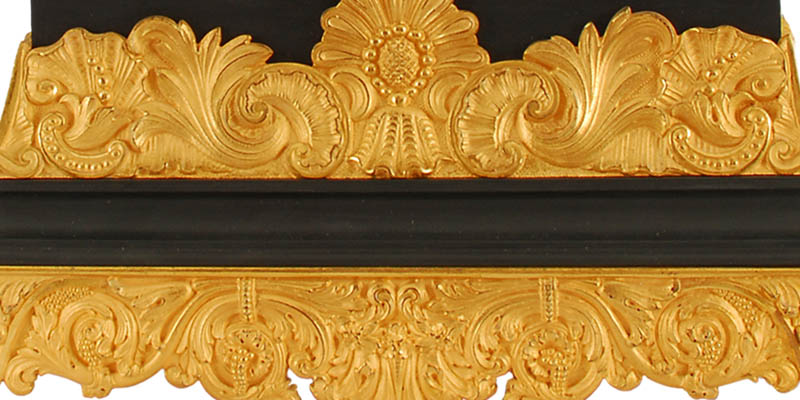Read below to find out more about ormolu.
Ormolu is defined as gilded brass or bronze used for decorative purposes, as in mounts for furniture. The origin of the word ormolu comes from the French term or moulu, which literally means ground gold.
Ormolu is an 18th Century English term for applying finely ground, high-carat gold-mercury amalgam to an object of bronze or spelter. During the process, known as mercury-gilding or fire-gilding, the mercury from the gold-mercury amalgam is burnt off in a kiln under extreme temperatures leaving behind pure gold veneer adhered to the metal object. The French refer to this technique as bronze doré. The English also call it gilt bronze.
These processes created a very toxic working environment and, unsurprisingly, most gilders did not survive beyond 40 years old due to exposure to the harmful mercury fumes. In 1830, France’s legislation outlawed the use of mercury due to the toxicity. It was still a process commonly employed however, into the 1900’s.
Antique ormolu was used as a decorative mounting for furniture, clocks, light sconces, chandeliers, and porcelain. After France outlawed mercury gilding, French artisans developed new gilding techniques by employing copper, zinc, and tin (brass), called pomponne. Now, you may see the term pomponne used to describe any gilt metal or faux gold decoration.
Other gilding techniques, such as electroplating, eventually took over, but nothing surpasses the original mercury-firing method for beauty, durability and the richness of the intense gold color.
The cleaning of gold ormolu should be limited to gently dusting with a soft cloth or soft brush. Pure gold will not corrode under normal conditions.

